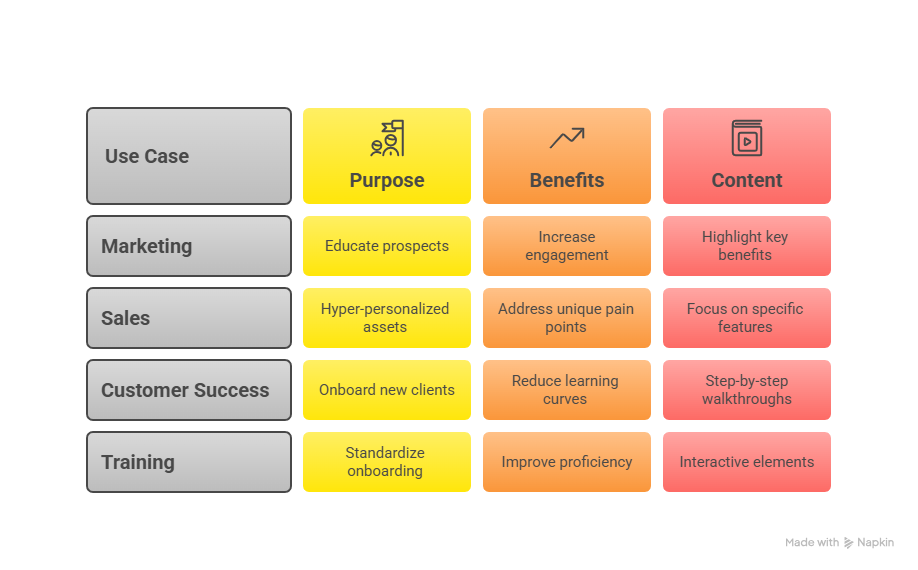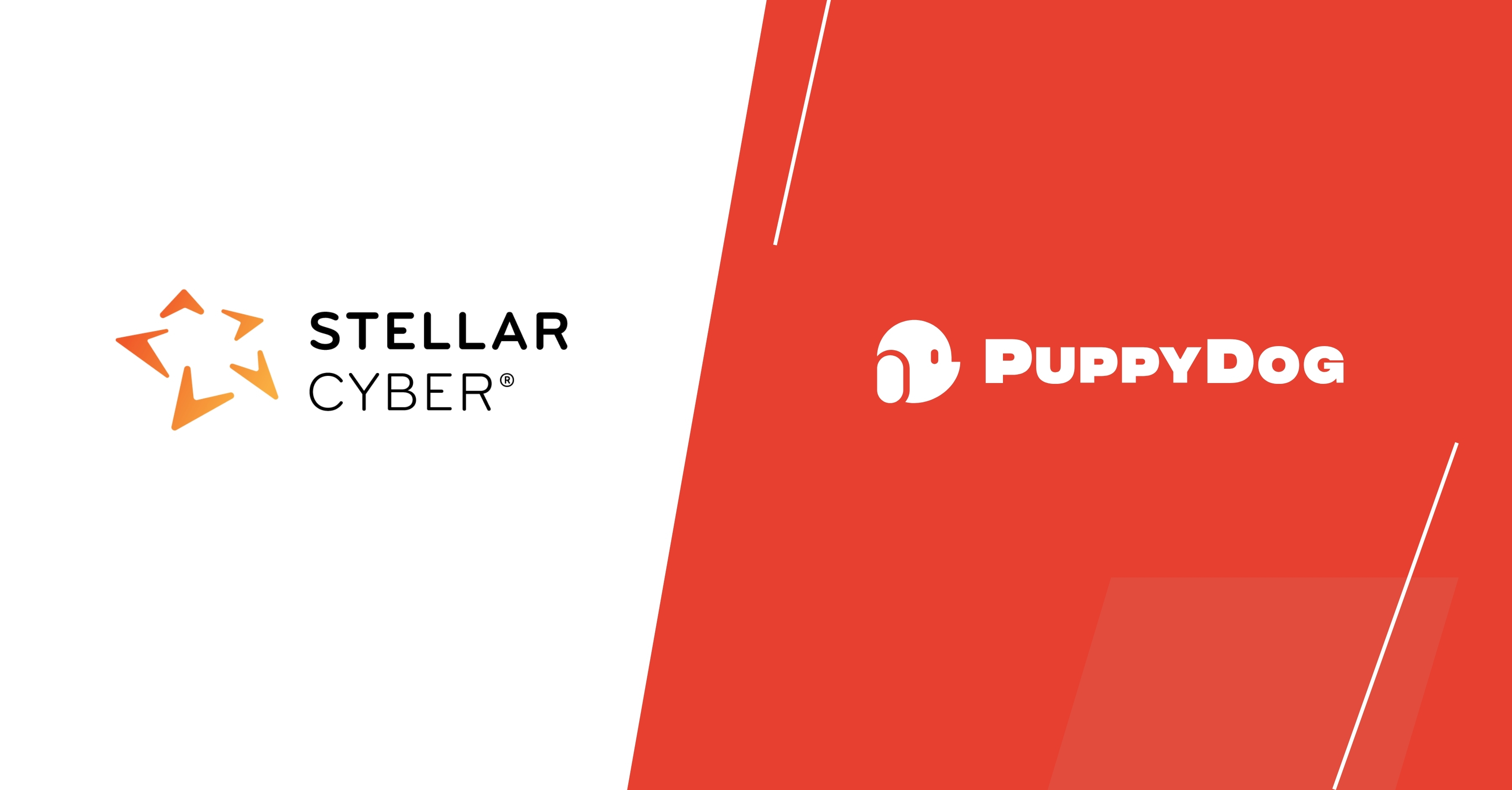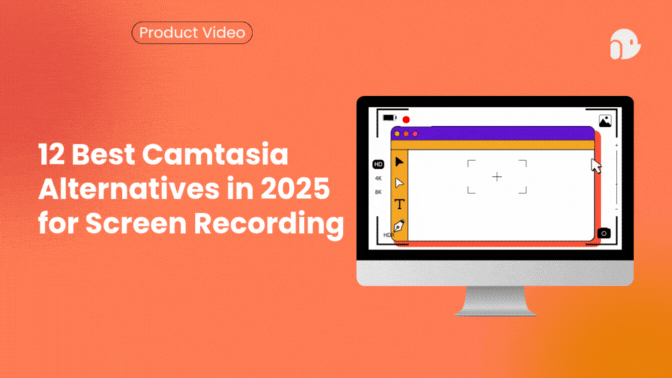How to Create Engaging Product Demo Videos Using AI

B2B buyers today expect more than static pages or long slide decks. They want to see a product in action. Studies show that 60% of B2B buyers watch product videos before making a purchase decision, and over 90% say video helps them build trust during evaluation. This makes demos one of the most influential touchpoints in the buyer journey.
Yet, creating high-quality, personalized demos has traditionally been a time-consuming and resource-heavy endeavor, often involving multiple takes, editing, and manual voiceovers. Enter AI-powered demo platforms: tools that not only automate production but also scale personalization, allowing marketing and sales teams to reach more prospects efficiently without compromising quality. Platforms like PuppyDog.io, for example, use AI to generate hyper-personalized demo videos based on each prospect’s profile, usage patterns, and adoption gaps, all from simple screenshots or screen recordings.
In this blog, we’ll explore:
- Why modern demos are central to the buyer journey and how they impact engagement and conversion.
- Common challenges in traditional demo production and the cost of manual workflows.
- How AI and automation are transforming product storytelling at scale.
- Key metrics to measure demo effectiveness and optimize performance.
- Practical examples and strategies for marketing, sales, customer success, and training teams.
By the end, you’ll understand how AI-driven product demos can save time, increase engagement, and turn your demo content into a measurable driver of revenue.
Why Demos Are the Heart of the Buyer Journey
When it comes to B2B decision-making, seeing truly is believing. Buyers want to experience the product in action before committing, and a well-crafted demo can make all the difference. Unlike static content, demos provide a tangible, interactive view of how a solution solves real-world problems, making abstract features meaningful and memorable.
High-quality demos do more than showcase product functionality; they guide prospects along their journey. At the awareness stage, demos quickly illustrate the core problem and how your product addresses it, hooking the viewer’s attention. During the consideration stage, personalized demos help prospects evaluate specific features relevant to their workflow, providing clarity and confidence. Finally, at the decision stage, demos reinforce trust, demonstrate ROI, and accelerate conversions by answering lingering questions before a meeting or trial.
Interactive and AI-powered demos elevate this experience even further. By tailoring content to each prospect’s profile, usage patterns, and priorities, tools like PuppyDog.io allow sales and marketing teams to deliver hyper-relevant experiences at scale. Instead of a one-size-fits-all video, buyers engage with content that feels made for them, increasing engagement and reducing friction in the sales process.
Why demos are indispensable in modern B2B marketing:
- Boost engagement: Visual storytelling captures attention more effectively than text or slides.
- Educate efficiently: Demos highlight the most critical features and benefits, reducing confusion.
- Drive conversions: Personalized experiences shorten the path from interest to action.
- Provide insights: Interactive demos generate valuable data about buyer preferences and behavior.
In short, demos have shifted from optional marketing tools to essential assets in the buyer journey, capable of informing, persuading, and converting prospects in a way static content simply cannot.
Common Challenges in Traditional Demo Creation

While product demos are invaluable, creating them the traditional way often presents significant hurdles. Conventional demo production requires a combination of filming, editing, scripting, voiceovers, and sometimes live presentations, all of which demand time, budget, and specialized resources. For many teams, these constraints limit how often demos can be produced and how personalized they can be for individual prospects.
Key challenges include:
- Time-Intensive Production: Recording multiple takes, editing videos, and synchronizing voiceovers can take days or even weeks. For fast-moving teams, this slows down marketing campaigns and sales enablement initiatives.
- High Costs: Hiring professional videographers, sound engineers, and editors adds up quickly. For teams creating multiple demos across regions or languages, costs escalate further.
- Limited Personalization: Traditional demos are usually “one-size-fits-all.” Personalizing each demo for different buyer segments requires manually re-recording or editing, which is rarely feasible at scale.
- Resource Bottlenecks: Dependence on skilled personnel creates scheduling challenges and slows down iterative improvements based on prospect feedback.
- Global Reach Limitations: Localizing content for international markets involves dubbing, translation, and sometimes reshooting, which is costly and time-consuming.
- Difficulty Measuring Impact: Traditional demos often provide little insight into engagement metrics. Teams may know how many people watched a demo but struggle to understand which features resonated, where viewers dropped off, or how the content influenced buying decisions.
These challenges underscore why many organizations are shifting toward AI-driven demo solutions. By automating production and enabling personalization at scale, platforms like PuppyDog.io address these pain points, reducing costs, accelerating delivery, and providing analytics that turn demos from static presentations into dynamic, high-impact sales tools.
The Role of Automation in Scaling Personalized Demos
Creating personalized product demos manually is a slow, resource-heavy process, which is why automation has become a game-changer for marketing and sales teams. AI-powered tools allow companies to produce high-quality demos faster, at lower cost, and with consistent messaging, all while tailoring content to individual prospects or customer segments.
At the heart of this shift is automation, which streamlines repetitive and time-consuming tasks. From editing and clip selection to voiceovers and subtitles, AI handles the heavy lifting, freeing teams to focus on strategy, storytelling, and understanding their audience. This speed and efficiency are particularly valuable for organizations managing large sales pipelines or global campaigns, where creating personalized demos for every prospect manually is impractical.
How automation enhances personalization:
- Dynamic Scripting: AI tools can automatically generate demo scripts based on a prospect’s profile, usage patterns, or feature gaps. This ensures that every video speaks directly to the viewer’s needs, rather than presenting a generic overview.
- Automated Voiceovers and Avatars: Instead of recording human narrations repeatedly, AI can generate realistic voiceovers or use avatars to present content, maintaining consistent tone and pacing across multiple videos.
- Localization at Scale: Automated translation and lip-syncing allow teams to deliver demos in dozens of languages quickly, making global reach achievable without the traditional costs of dubbing and reshooting.
- Custom Video Playlists: AI-driven platforms can assemble sequences of personalized demos tailored to a prospect’s journey, creating a unique experience for each viewer without manual intervention.
Platforms like PuppyDog.io illustrate this approach in action. Their AI agents learn your product and customer base, automatically generating demo playlists that address specific adoption gaps or feature interests. By automating content generation, scriptwriting, and voiceover integration, teams can scale personalized demos to hundreds or thousands of prospects while maintaining high production quality.
Ultimately, automation transforms product demos from static, one-size-fits-all assets into dynamic, hyper-personalized tools that drive engagement, shorten sales cycles, and deliver measurable ROI.
Metrics That Matter: Measuring Demo Effectiveness
A product demo is only as powerful as the insights it generates. In the past, teams relied on basic metrics like view counts or click-throughs, which offered a limited understanding of buyer engagement. Today, AI-powered platforms provide granular analytics that reveal how prospects interact with every second of a demo, turning these videos into actionable sales intelligence.
Key metrics to track for demo effectiveness include:
- Feature Engagement: Identify which product features or sections captured the most attention. This helps teams understand what resonates with prospects and refine messaging accordingly.
- Drop-Off Points: Analyze where viewers pause or stop watching. Early drop-offs may indicate content that is too complex or unengaging, highlighting opportunities for optimization.
- Completion Rates: Track the percentage of viewers who watch the demo from start to finish. High completion signals effective storytelling, while low rates suggest the need for tighter scripts or more concise visuals.
- Stakeholder Discovery: In B2B contexts, demos often reach multiple decision-makers. Analytics can uncover hidden stakeholders and track engagement across the buying committee, helping sales teams prioritize follow-ups.
- Personalization Effectiveness: Measure how tailored content performs compared to generic demos. AI platforms can correlate prospect interactions with personalized sections to conversion rates, demonstrating the ROI of customized content.
Platforms like PuppyDog.io take this a step further by integrating demo analytics directly into CRM systems, providing real-time insights for sales teams. For example, if a viewer repeatedly engages with a specific feature, sales reps can proactively address that interest in follow-ups, turning engagement data into revenue opportunities.
By tracking these metrics, organizations can continuously refine demo content, optimize messaging for different buyer segments, and ensure that every video contributes to the broader sales and marketing strategy. In short, measuring effectiveness is no longer optional; it’s a critical step in turning demos into high-performing revenue engines.
Use Cases Across Teams (Marketing, Sales, Customer Success, Training)
AI-powered product demos are not limited to a single team—they can create value across the entire organization. By delivering personalized, engaging video experiences at scale, demos become versatile tools that support marketing, sales, customer success, and training initiatives.
Marketing:
Marketing teams use demos to educate prospects at the top of the funnel. AI-generated videos can highlight key product benefits, showcase solutions for industry-specific pain points, and personalize content for different segments. This approach increases engagement, improves lead quality, and accelerates the buyer journey by ensuring prospects understand the product before interacting with sales.
Sales:
For sales teams, demos serve as hyper-personalized assets tailored to individual prospects. AI tools can generate videos that focus on specific feature sets or use cases, allowing sales reps to address unique pain points without creating content manually. Personalized demos also provide data insights, helping reps prioritize follow-ups and tailor conversations based on demonstrated interest.
Customer Success:
Customer success teams can leverage AI demos to onboard new clients efficiently. Step-by-step walkthroughs tailored to the client’s setup or use case reduce learning curves and support adoption. These videos can also serve as ongoing reference material, helping customers maximize product value without repeated one-on-one sessions.
Training:
Training teams benefit from consistent, scalable content. AI-powered demos can standardize onboarding materials for employees or partners, ensuring everyone receives the same high-quality, up-to-date information. Interactive elements and personalization help trainees retain knowledge faster, improving proficiency across the organization.
By integrating AI-driven demos across departments, organizations turn a single asset type into a multi-purpose solution. From lead generation to onboarding, every team can deliver more personalized, engaging experiences, driving adoption, efficiency, and measurable business impact.

The Future of Buyer Enablement and Demo Automation
The next wave of buyer engagement is being shaped by AI-driven personalization and adaptive storytelling. Imagine demos that evolve in real time, adjusting content based on a prospect’s behavior, preferences, and industry context. Predictive demo sequences could anticipate buyer questions, proactively highlighting the most relevant features, and creating a truly intelligent viewing experience.
A major driver of this transformation is the rise of AI demo agents, autonomous systems capable of generating, localizing, and delivering personalized product demos end-to-end. These agents learn your product, understand customer behavior, and dynamically tailor content for each viewer, making high-volume, one-to-one engagement feasible without additional human effort.
Companies like PuppyDog.io are pioneering this space, demonstrating how automated demo creation can scale globally while maintaining hyper-personalized experiences. By integrating AI, analytics, and interactive elements, these platforms are redefining the standard for buyer enablement.
As this technology matures, organizations that embrace AI-driven demos will set the benchmark for efficiency, relevance, and engagement. Simply put: tomorrow’s product story will tell itself, intelligently.
Conclusion
AI-powered product demos are no longer a futuristic concept—they’re transforming how companies engage, educate, and convert buyers today. By combining personalization, automation, and analytics, organizations can create highly relevant, engaging content at scale, turning each demo into a measurable driver of adoption and revenue. From marketing to sales, customer success, and training, the versatility of AI demos ensures that every team benefits, while the ability to localize and personalize content opens doors to global audiences.
To harness these advantages, start by focusing on strategy and storytelling—AI excels when paired with strong scripts, clear messaging, and well-mapped buyer journeys. Leverage interactive elements, track engagement metrics, and continually optimize your content for maximum impact.
Ready to see the future of buyer engagement in action? Explore platforms like PuppyDog.io to create hyper-personalized product demos at scale and elevate your buyer experiences—because the right demo doesn’t just show your product, it drives decisions.
Further Reading:
“What Are Product Demos? Your Guide to Success with 10 Examples” — Chameleon blog: an excellent breakdown of product demos in the buyer journey.
“How AI Video Analytics Transforms Customer Experience” — Revuze blog: dives into how AI analytics for video content offer deeper insight and ROI.
FAQs
1. What are the benefits of using product demonstration videos?
Product demo videos help prospects understand your product faster by showing real use cases instead of explaining them in text. They boost engagement, reduce confusion, and shorten the sales cycle by delivering clarity upfront. Demo videos also improve trust, increase conversions, and provide sales reps with repeatable, on-brand content they can share across campaigns, landing pages, and outbound sequences.
2. How do AI-generated talking head videos work?
AI talking-head videos use advanced voice cloning, facial animation models, and text-to-speech technology to create lifelike virtual presenters. You provide a script (or the platform generates one), and the AI turns it into a human-like on-camera narration. This eliminates the need for filming, lighting, talent, or editing — making video creation significantly faster and more scalable.
3. What makes interactive video marketing effective?
Interactive videos are effective because they transform viewers from passive watchers into active participants. Features like clickable hotspots, branching paths, and embedded CTAs encourage viewers to engage deeper and personalize their journey. This not only increases retention but also provides rich behavioral insights you can use to optimize your funnel.
4. Why is video localization important for global audiences?
Localization ensures your videos feel relevant and culturally aligned with different regions. It includes translating text, dubbing or updating voice-overs, adjusting examples, and adapting on-screen visuals. Localized videos help international audiences better understand your message, strengthening trust and increasing conversions across global markets.
5. How does video marketing automation improve efficiency?
Video automation streamlines repetitive tasks like generating variations, personalizing content, scheduling publishing, tracking performance, and embedding videos across multiple channels. Instead of manually creating dozens of versions, automation tools instantly adapt your video for different personas, languages, or campaigns, saving time, reducing cost, and boosting overall ROI.

Sarah Thompson is a storyteller at heart and Business Developer at PuppyDog.io. She’s passionate about creating meaningful content that connects people with ideas, especially where technology and creativity meet.





